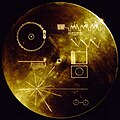Music
Johnson's music experienced a revival in the 1960s thanks in large part to the efforts of blues guitarist Reverend Gary Davis. A highly regarded figure within the burgeoning New York folk scene, Davis gave copies of Johnson's records to young musicians and taught them to play his songs. The Soul Stirrers, Staples Singers, Buffy Sainte-Marie and Peter, Paul & Mary all covered Johnson. [6] In 1969, the English folk-rock band Fairport Convention released the album What We Did on Our Holidays which included a song inspired by "Dark Was the Night, Cold Was the Ground" called "The Lord Is in this Place...How Dreadful Is this Place". [10] A compilation album titled Dark Was the Night was released in 2009 by the Red Hot Organization, a charity that raises awareness of HIV and AIDS issues through music. The Kronos Quartet recorded an arrangement of "Dark Was the Night, Cold Was the Ground" that appears on the album. [11] The song "Excavating Rita" by Half Man Half Biscuit on their 2011 album 90 Bisodol (Crimond) quotes the song's title.
Singer-guitarist Jack White of The White Stripes called "Dark Was the Night, Cold Was the Ground" "the greatest example of slide guitar ever recorded" [12] and used the song as a standard to measure such iconic rock music that followed in its wake, such as "Whole Lotta Love" by Led Zeppelin. [13] In 2003, John Clarke in The Times wrote that "Dark Was the Night, Cold Was the Ground" was "the most intense and startling blues record ever made". [14] Francis Davis, author of The History of the Blues concurs, writing "In terms of its intensity alone—its spiritual ache—there is nothing else from the period to compare to Johnson's 'Dark Was the Night, Cold Was the Ground', on which his guitar takes the part of a preacher and his wordless voice the part of a rapt congregation." [15]
Johnson's recording of "Dark Was the Night, Cold Was the Ground" was selected by the Library of Congress as a 2010 addition to the National Recording Registry, which selects recordings annually that are "culturally, historically, or aesthetically significant". [16] The Wire included the song in their 1998 list of "100 Records That Set the World on Fire (While No One Was Listening)". The staff wrote that Blind Willie "recorded nothing else like this and, therefore, it has no equal in recorded music, even though Ry Cooder has made a good living scoring movies following its lead." They further noted that the song could retrospectively be described as ambient music as it is "a piece of country gospel improvisation, slide guitar with vocal hums and moans, but no lyrics." [17]
Usage in film and television
“Dark Was the Night, Cold Was the Ground” was used on the Oscar-nominated soundtrack to Pier Paolo Pasolini's film The Gospel According to St Matthew , in scenes where Judas Iscariot laments betraying Christ and a cripple asks to be healed. [18] Ry Cooder based his soundtrack to the film Paris, Texas on "Dark Was the Night, Cold Was the Ground", which he has described as "the most soulful, transcendent piece in all American music." [19] The television show The West Wing refers to the song and its impact to the Voyager Program in the Season 5, episode 13 "The Warfare of Genghis Khan" and plays the song at the end of the episode. Wim Wenders, the director of Paris, Texas, included Blind Willie Johnson's music and life in his 2003 documentary The Soul of a Man . [20] The song was used in Martin Scorsese's 2023 film Killers of the Flower Moon .
Voyager Golden Record
In 1977, Carl Sagan and other researchers collected sounds and images from planet Earth to send on Voyager 1 and Voyager 2. The Voyager Golden Record includes recordings of frogs, crickets, volcanoes, a human heartbeat, laughter, greetings in 55 languages, and 27 pieces of music. "Dark Was the Night, Cold Was the Ground" was included, according to Timothy Ferris, because "Johnson's song concerns a situation he faced many times: nightfall with no place to sleep. Since humans appeared on Earth, the shroud of night has yet to fall without touching a man or woman in the same plight." [21]


